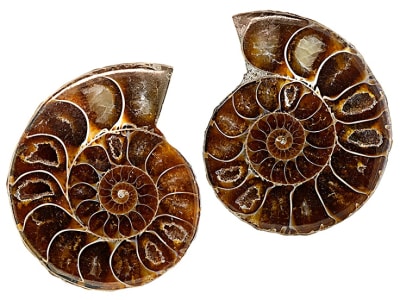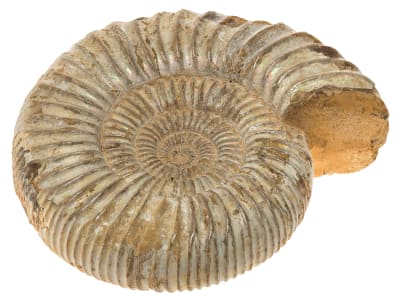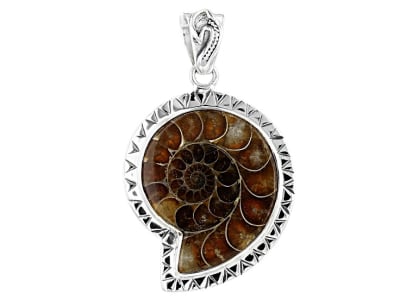Ammonites were marine animals that existed during the Jurassic and Cretaceous periods, and are related to modern-day octopi, squid and cuttlefish. The same event that wiped out dinosaurs was the end of this species, as well. On rare occasions, the ammonite fossilized shells became mineralized, exhibiting a striking iridescent play of color. Ammonite is typically found as fossil specimens or as iridescent gems cut from the fossils under the trade name Ammolite.
General Information
Tolerance:varies
LWUV: Inert
Ammonite Shell Colors
-
 Black
Black -
 Brown
Brown -
 Brown
Brown -
 Multi-color
Multi-color
Alternate Names
Ammolite, Ammonite, Korite, Aapaok And Calcentine
Countries of Origin
Canada; Russian Federation; Morocco; Unknown; United States of America; Madagascar; Peru
History
When dinosaurs roamed the earth, ammonites lived in the sea. They are related to modern-day octopi, squid and cuttlefish. The same event that wiped out dinosaurs marked the end of this species as well. On rare occasions, the ammonite fossilized shells became mineralized, exhibiting a striking iridescent play of color. A creature of the Jurassic and Cretaceous periods, ammonite today is typically found as fossil specimens or as iridescent gems cut from fossils and marketed under the trade name Ammolite.
Species/Variety
Pyritized Ammonite
Ammonites were marine animals that existed during the Jurassic and Cretaceous periods, and are related to modern-day octopi, squid and cuttlefish. The same event that wiped out dinosaurs was the end of this species, as well. Pyritized ammonite occurs when, during petrification, the ammonite's organic material is replaced with pyrite, or iron disulfide more commonly known as 'fool's gold'. The result is a beautifully preserved and durable ammonite fossil.


